
Wine Culture and Information since 2002 - Volume 22
 Wine Culture and Information since 2002 - Volume 22 |
|
Issue 50, March 2007 |
Contents |
|
|
What Are Appellations For? |
|
Appellations are useful. The point is to understand what they are indeed for, or better to say, to understand whether their purpose is to safeguard the tradition and typicality of a wine - last but not the least, its quality - or they play a solely commercial and speculative role. It probably is both things. In its “essential” form, appellations are laws defining and regulating the production of a specific wine, by defining the territory in which it can be produced, viticultural practices and grapes allowed, wine making techniques and the organoleptic qualities a wine must have in order to belong to that appellation. In other words, it is an “attempt” to define a product in legal terms. The pretension of defining quality according to laws and obligations is a kind of utopia, as - fist of all - quality is a precise productive choice requiring specific criteria going beyond the impositions, although necessary, of a law. If we consider production disciplinary as a tool useful for the safeguarding of typical products in their definition, therefore the usefulness of a law seems to be more appropriate. The safeguarding of typical products of a territory - every territory - is legitimate and it is right they must be safeguarded against any possible fraud or forgery. It is therefore desirable there are specific laws - disciplinary - having the role of regulating the production of a typical product, such as wine, as well as setting criteria in order to ensure their recognizability and a sense of belonging to that specific product. Although it is too much evident a specific product, with its unique and specific qualities, can be exclusively produced in a specified territory, the temptation of producing something similar elsewhere, in particular when a product becomes famous and looked for, it is something which frequently happens and with the only goal of making profits, not for the love of quality, of course. Appellations are also useful to conquer new market shares, to keep and consolidate the ones already conquered and to avoid to lose them. To this reason may in fact make think the decision of France and Spain about the imminent release of “national” appellations and which will be recognizable with the indications Vignobles de France for French wines and Viñedos de España for Spanish ones. In both cases, the commercial goal is evident. They are two preventive measures which should help French and Spanish wines to get new market shares and, at the same time, to get back the lost ones, taking advantage of “France” and “Spain” names for the promotion and spreading of their wines. As for Vignobles de France appellation, the intent of using this new appellation as a marketing strategy has been clearly stated. French producers in fact believes thanks to this new “national” appellation it will be possible to compete with the producers of the New World. The decision has however had strong detractors, as well as strong supporters. Supporters of this appellation in fact assert it will be useful for a better understanding of French wines in the world and will allow producers to adapt their products according to the different taste of consumers. According to the opinion of this measure's supporters, this should be enough in order to convince again the consumers of other countries in favor of French wines, in particular in those countries where France lost market shares. The new Vignobles de France appellation will allow producers - for the first time - to blend wines belonging to vin de pays appellations and coming from different regions and to sell them under the generic “France” appellation. In the label of these wines must be stated the qualities of grapes used for the production and which can be harvested in the 64 areas of France, excluding Alsace and Champagne, areas in which are being produced AOC (Appellation d'Origine Contrôlée) wines only. Also the new appellation released in Spain - Viñedos de España - has been cause of pretty negative opinions from producers of the main wine areas of the country. Among the strongest detractors of this new appellation emerges the position of La Rioja, one of the main wine areas in Spain and that, more than others, contributes to the identification of Spanish wines in the world. Producers of La Rioja in fact believe the national Viñedos de España appellation can be detrimental for Spanish quality wines, as this way will make possible the commercialization of ordinary quality wines while taking advantage of the Spain “brand”. All that - according to La Rioja producers - will be harmful for wines currently belonging to quality appellations of the whole country. Supporters of this new appellation assert it will be useful to make a recognizable national quality model. An enterprise which seems to be very hard without to support of producers from the most important wine areas of Spain. What do consumers think about the role and the utility of appellations? In the past months we asked our readers their opinions about some aspects concerning appellations, their importance in production and in the choice of wines. According to our polls, consumers think appellations play a pretty important role. They are important for the safeguarding of quality and influence their choices at the moment of purchase. In a poll in which we asked our readers about the best Italian appellation according to the real quality of its wines, most of them said the best wines are the ones belonging to DOCG appellation, that is the highest ranking of the system. This should make legislators think a little. If it is true appellations are considered important by consumers, it is also true they must also ensure a high level of quality. In other words, an appellation, as such, is not enough to catch the interest of consumers. They also want quality. The case of IGT appellation is singular: despite it is lower - at least in theory - than DOC, according to our polls, consumers believe this appellation has a quality similar to DOC. Appellations are important, however they are not enough to convince consumers, because - first of all - consumers look for quality expressed by facts, not only set by law or because of commercial speculation reasons.
|
||||
MailBox |
|
In this column are published our reader's mail. If you have any comment or any
question or just want to express your opinion about wine, send your letters to
our editorial or fill in
the form available at
our site.
|
| I noticed at the beginning of vineyards are being planted roses or fruit trees - such as cherries - as well as wild fruits plants or olive trees. What are they for? Do they have a specific function in the cultivation of vine? |
| Danilo Cussolotto -- Verona (Italy) |
| The custom of planting a rose at the beginning of each row in a vineyard does not have any essential function for the cultivation of the vine, however it plays a “guarding” role against the presence of possible diseases or parasites. As the rose is more sensitive than vine, in case conditions for the propagation of a disease should take place, the rose will be affected in advance than vine, therefore allowing a proper prevention before the disease would attack the vine as well. |
| Are there any wine produced without sulfites? In case there are, could you please suggest some producers who do not make use of these preservatives? |
| Andrea Ossi -- Formignana, Ferrara (Italy) |
| The use of sulfites in wine making - in particular sulfur dioxide - is considered fundamental in order to ensure wine stability while avoiding alterations which could compromise organoleptic qualities. In its many forms - by burning sulfur discs, potassium metabisulfite, spray cans and liquid solutions - sulfur dioxide is virtually used in any phase of wine making, from the must to bottling. Also in the production of organic wine - despite the limits are far lower than the ones allowed in conventional wine making - the use of sulfur dioxide is allowed in order to ensure the wine a better stability and protection against faults. We do not know about any producer making no use of sulfites - something which we think to be pretty impossible because of the above mentioned reasons - however it is known many producers state they use lower quantities of sulfur dioxide than the ones allowed by law. |
ProvenceFamous for its landscapes and its cooking strongly influenced by Mediterranean traditions, Provence is the undisputed homeland of rose wines of France |
|
French Provence is a place rich of charm. A suggestive landscape which has always attracted painters and artists which took their inspiration from the atmosphere of this French region bordering the Mediterranean sea. To attract tourists to Provence, besides the landscape and natural beauties, there is also cooking, which in this part of France becomes full of colors and the typical aromas of Mediterranean cooking. In Provence are in fact cultivated olive trees for the production of oil and in the woods are found plenty of aromatic herbs. The vicinity to the sea introduces fish in the cooking, which then meets the typical herbs and the many vegetables cultivated in the region. And then there is garlic, a fundamental ingredient which - together with olive oil - is virtually found in every dish. With garlic is produced the most famous sauce of Provence - aïoli - used to accompany the many recipes based on fish and vegetables.
Provence is not landscapes and nice food only. In Provence are also produced wines and here the beverage of Bacchus mainly gets a pink color, the most prolific area of France for rose wines and, of course, the style of wine which is mainly consumed in Provence. In past times, the quality of Provence's wines was frequently doubted by many - perhaps also because the many prejudices against rose wines - however in recent times the enology of the region has started a new course aimed to the improvement of wine quality, a process which allowed the other wines of Provence to emerge as well. Therefore, not only rose wines. In Provence are also produced red wines - of which the most representative ones are from Bandol - and white wines, of which the most famous ones are from Cassis. Roses are however the most typical wines of French Provence and these are the wines mainly matched to local cooking, including fish. The influence of the Mediterranean area is pretty strong in Provence: the region benefits of 3,000 hours of sun per year and the temperature in summertime can also reach 40° C (104° F). The environmental conditions in Provence are positive for the cultivation of vine, including Mistral wind and sea breeze, both essential to mitigate the effects of dry air. According to the French quality system, Provence includes Corse as well, the suggestive island north from Sardinia, which can be defined as a mountain in the sea. It is believed vine was introduced in Corse by ancient Greeks, therefore the enology of the island has a millenary traditions. Also vineyards in Corse benefits from the sun, refreshed by the effects of sea breeze and altitude. In Corse are found varieties of French origin, however here are also found Italian varieties, such as Vermentino and Sangiovese, here known as Niellucio. Provence is among the most ancient area in France where it was started the cultivation of vine and the production of wine: it is believed - although there are no reliable information about it - these activities began in these lands before than in Narbonne, in the Languedoc. The exact period in which viticulture was introduced in Provence is in fact uncertain and subject of controversies. It is however a common opinion that when Phocaeans arrived in these lands in 600 BC and founded Phokaia - which will later become Massalia, today known as Marseille - vine was not present. It is very likely the renowned wines of Massalia at those times were indeed imported from Greece or from Italy, in particular from Sicily. Reliable information about the cultivation of the vine and the production of wines in this region are dated back to the times of Gauls, also thanks to the influence of enological culture and traditions of ancient Romans. In the course of its history, Provence was subject of dispute for its dominion, therefore undergoing the influence of Saracens, Carolinges, Holy Roman Empire, Counts of Toulouse, Catalans, René d'Anjou and - finally - House of Savoy. During these periods it is believed also viticulture has been influenced by the traditions and cultures which succeeded with time and, with that, also the production of wine. For most of the 1800s, Provence belonged to the Kingdom of Sardinia, period during which were introduced many varieties of Italian grapes, still found in the region. At the end of the nineteenth century - just like in other wine areas of Europe - arrived phylloxera, devastating vineyards and therefore interrupting viticulture and wine production. Despite viticulture was resumes after the phylloxera period, wines of Provence have never significantly attracted wine lovers, also because of the non truly noble quality which was common some years ago in this region. The succession of the many dominions in this territory have contributed to the cultural richness of Provence, also influencing many aspects of the region, including wine. According to an enological point of view, wines of Provence have been influenced both by Italian and French traditions. In Provence are in fact cultivated varieties both of clear Italian origin as well as of clear French origin. The influence of Italian varieties is also evident in Corse, where the influence of the neighboring Sardinia is pretty strong, in particular for the varieties of grapes cultivated in the island. Despite Provence is a strong tourist area, little attention has been paid to its wines, usually shadowed by cooking and the natural beauties found in this territory. Wines of Provence have therefore suffered of the fame of other attractions of the region and only in the last few years - also thanks to a radical change in the productive strategies, finally aiming to quality - Provence's wines began to emerge in the French wine scene, not only for the wide selection of rose wines, but also for red and white wines.
|
||||||||||||
|
Wines of Provence are classified according to the quality system in force in France. The lowest level of the system is reserved to Vin de Table, followed by the Vin de Pays classification, then Vin Délimité de Qualité Supérieure - shortened as “VDQS” and not very used in France - and finally Appellation d'Origine Contrôlée, shortened as “AOC”. The wine areas defined as Appellation d'Origine Contrôlée of Provence are eight and precisely: Bandol, Bellet, Cassis, Coteaux d'Aix-En-Provence et Les Baux-De-Provence, Coteaux Varois, Côtes de Provence, Palette and Vin de Corse. Of these appellations, the most representative ones are: Bandol, Cassis, Coteaux d'Aix-En-Provence et Les Baux-De-Provence and Côtes de Provence. The Vin de Corse appellation includes five local appellations (Vin de Corse - Cap Corse, Calvi, Sartène, Figari and Porto-Vecchio) two communal appellations (Ajaccio and Patrimonio) and one Vin Doux Naturel: Muscat du Cap Corse.
|
|
Provence is located in the south-eastern part of France, along the coast of Mediterranean sea, a position which introduced in the region typical customs and cultures of the Mediterranean area, including cooking. Only in recent times the wines of Provence are getting more and more popular among wine lovers, after in the region has been started a radical change aiming towards quality production. Provence is famous for its rose wines - the wine style produced the most in this region and which typically matches the variegated local cooking - however there also are interesting examples of red and white wines, produced with grapes of French and Italian origins. The main white berried grapes cultivated in Provence are: Bourboulenc, Chardonnay, Clairette, Grenache Blanc, Marsanne, Sauvignon Blanc, Sémillon, Ugni Blanc - known in Italy as Trebbiano Toscano - and Vermentino, here known as Rolle. the main red berried grapes of Provence are: Braquet - known in Italy as Brachetto - Cabernet Sauvignon, Calitor, Carignan, Cinsaut, Folle Noir, Grenache Noir, Mourvèdre, Syrah, Tibouren, Sciacarello and Niellucio, name with which it is called Sangiovese in Corse.
|
|
Among the appellations of Provence, Bandol is the one which is getting the higher worldwide attention. Bandol is a relatively small wine area - as small as 600 hectares - and it is located at about 50 kilometers east from Marseille (about 30 miles) along the coast bordering the Mediterranean sea. Despite in this area is being produced a huge quantity of rose wine - just like in all the Provence's territory, after all - Bandol is mainly famous in the world for its red wines. The grape mainly used for the production of Bandol wines, both rose and red, is Mourvèdre, which in this area finds excellent conditions. Red wines of Bandol are made for at least 50% of Mourvèdre, whereas the remaining part is made of Grenache Noir and Cinsaut. It should however be noticed most of red wines in Bandol are made with 100% Mourvèdre. The same grapes are also used for the production of rose wines, frequently aged in cask for about eight months. White wines of Bandol, produced in small quantities, are mainly made of Clairette, Bourboulenc and Ugni Blanc.
|
|
If Bandol is famous for red wines, Cassis it is for white wines, the wine style mainly produced in this area, whereas the production of red and rose wines is pretty marginal. Cassis is located few kilometers east from Marseille, along the coast of the Mediterranean sea. White wines - in which are frequently found aromas of aromatic herbs, in particular rosemary - are mainly produced with Clairette and Marsanne grapes. Sometimes, in the composition of white wines of Cassis, can also be used Ugni Blanc grape as well as small quantity of Sauvignon Blanc. White wines of Cassis are pretty dry and light, usually consumed with the dishes made of seafruits typical in Provence's cooking. Red and rose wines of Cassis are mainly produced with Grenache Noir, Cinsaut and Mourvèdre grapes.
|
|
The city of Aix is one of the main tourism place of Provence and to the north and to the south of this ancient city is found the wine area of Coteaux d'Aix-En-Provence. Inside this area is found a sub appellation and in which are being produced interesting red wines: Les Baux de Provence. The soil which is found in this lands - as well as the climate - is in fact pretty suited for the cultivation of red berried varieties, mainly Cabernet Sauvignon, Syrah, Cinsaut, Mourvèdre and Grenache Noir. In this area is also produced a small quantity of white wine - usually with Viognier, Chardonnay, Sauvignon Blanc and Sémillon grapes - as well as rose wines. Rose wines of Coteaux d'Aix-En-Provence are generally produced with the bleeding technique - that in France is called saignée - during the production of red wines. The red wines of this appellation are usually allowed to age in cask for at least 12 months.
|
|
Côtes de Provence is the largest appellation of Provence - with an area of about 18,000 hectares - and here are found more than 80% of the vineyards of the region. The territory of this appellation begins in the neighboring of the city of Toulon and goes up to the city of Sanit-Tropez, along the coast and in the inland parts. Vineyards are scattered in the whole territory, sometimes distant one from each other many kilometers, therefore quality and characteristics of Côtes de Provence's wines are pretty variable, both because of the differences of the soil, as well as because of the difference of climate. About three quarters of the production in this appellation is about rose wines, generally obtained with Grenache Noir, Cinsaut and Tibouren grapes. In Côtes de Provence are also produced red wines - generally from Cabernet Sauvignon, Cinsaut, Grenache Noir, Mourvèdre, Syrah and Tibouren grapes - as well as a small quantity of white wines, generally produced with Clairette, Rolle - name with which it is known in Provence Vermentino grape - Sémillon and Ugni Blanc, known in Italy as Trebbiano Toscano.
|
Comparing Verdicchio dei Castelli di JesiIndisputable queen of white grapes of Marches, Verdicchio is among the most interesting white grapes of Italy and protagonist of excellent wines famous all over the world |
|
In the enological scene of Marches - the pleasant region of central Italy which from the Apennines goes to the Adriatic sea - there is a grape which more than others distinguishes the wines of the region, a grape which contributed to the fundamental rebirth of the wines of Marches: Verdicchio. Among the most appreciated grapes of Italy, Verdicchio is capable of making full bodied wines while proving an interesting enological versatility. Despite the most common wine style produced with Verdicchio is dry, with this grape are also produced excellent sweet wines, as well as sparkling wines, including classic method. Before being used for the production of excellent white wines, Verdicchio had to go a long way, a journey began 50 years ago, when to the renowned white berried grape of Marches was assigned the job of relaunching the wines of the region. Together with Verdicchio was also released the classic amphorae shaped bottle: an indissoluble couple which distinguished worldwide the wines produced with this grape. Autochthonous grape of Marches and spread in the territory of the region since many centuries, Verdicchio was mentioned for the first time in 1579 in a document which imposed the cultivation of this grape in the territory of Matelica. Despite Verdicchio is common all over the territory of Marches, there are two areas which are mainly associated to this white grape: Matelica, in the province of Macerata, and Castelli di Jesi, in the province of Ancona. Telling what is the best of the two areas for the production of Verdicchio is pretty hard, as both in Matelica and in Jesi are being produced with this grape excellent examples of white wines in the dry, sweet and sparkling styles. Despite Verdicchio grape is mainly common in the Marches - its homeland - this white grape is also found, in small quantities, in Umbria and Latium regions, in both cases used together with other grapes for the production of some Denominazione d'Origine Controllata wines.
|
|
Verdicchio is an extremely versatile grape and with which can be produced different styles of wines. Among the most interesting qualities of Verdicchio must certainly be mentioned the good body of its wines, a quality allowing the wines produced with the famous white berried grape of Marches to be aged for many years in the bottle. Because of its structure, Verdicchio is frequently defined as a red wine disguised as a white wine: some scientific researches done on this aspect, suggest Verdicchio is among the white berried grapes having the highest content in polyphenols. Another characteristic of wines produced with Verdicchio - and which is also found in wines produced with other white grapes - is the characteristic aroma of almond, a quality which is clearly evident since the first moments of tasting, very correspondent to the mouth, and which can be clearly perceived after the wine has been swallowed.
The goal of this month's comparative tasting is the study of the qualities of Verdicchio by means of the evaluation of wines produced with different wine making techniques. In order to simplify the evaluation, the tasting will examine three wines produced with 100% Verdicchio and coming from the same area - Castelli di Jesi - the widest production area for this grape. The first wine of our comparative tasting is Garofoli's Verdicchio dei Castelli di Jesi Classico Superiore Podium, aged for 15 months in steel tanks. The second wine is Sartarelli's Verdicchio dei Castelli di Jesi Classico Superiore Balciana, produced with late harvested grapes, whereas the third wine is Umani Ronchi's Verdicchio dei Castelli di Jesi Classico Riserva Plenio, partially fermented in barrique and aged in cement tanks. Garofoli's Verdicchio will be served at a temperature of 10° C (50° F), whereas the other two wines will be served at a temperature of 12° C (54° F). The comparative tasting will be done, as usual, by using three ISO glasses.
|
||||||||
|
Just like any other wine, no matter the style, also the color in wines produced with Verdicchio varies according to the wine making techniques, the quality of grapes and aging. The color which is mainly observed in Verdicchio fermented and aged in inert containers - such as steel or cement tanks - is more or less intense straw yellow, rarely with pale or greenish yellow nuances. Thanks to its characteristics, wines produced with Verdicchio can be aged for many years in bottle, a period during which the color will get intense golden yellow hues. The same color is generally observed in wines produced with overripe grapes and in sweet wines, in which the color can easily get to amber yellow. Verdicchio is also used for the production of wines fermented or aged in cask, a wine making technique which gives Verdicchio intense golden yellow colors. The first wine of which we will examine appearance is Garofoli's Verdicchio dei Castelli di Jesi Classico Superiore Podium. By holding the glass tilted over a white surface - a sheet of paper is enough - at the base of the liquid mass will be observed a brilliant straw yellow color, whereas the nuance, observed to the edge of the liquid mass, towards the opening of the glass, will be characterized by a greenish yellow color. The second wine we will examine is Sartarelli's Verdicchio dei Castelli di Jesi Classico Superiore Balciana. The color of this wine is intense straw yellow with golden yellow nuances, the sign of the use of overripe grapes for its production. Let's now pass to the evaluation of the third wine of our comparative tasting: Umani Ronchi's Verdicchio dei Castelli di Jesi Classico Riserva Plenio, the only one of the three to be partially fermented and aged in cask. The color of this wine is brilliant golden yellow and the nuances will be of the same color.
|
|
Verdicchio is rarely used together with other grapes for the production of wines, in most of the cases they are produced with 100% Verdicchio. The most characteristic aromas of Verdicchio recall fruit and flowers, sometimes can also be perceived aromas recalling tropical fruits. One of the most characteristic and identifying aromas of Verdicchio certainly is almond, a quality which is also found in the taste. Among the most characteristic fruit aromas in Verdicchio are mentioned pear, apple, peach, plum and citrus fruits, whereas the most common flower aromas found in Verdicchio are hawthorn and broom, as well as chamomile and linden, rarely acacia and jasmine. Fermentation and aging in cask give Verdicchio aromas of vanilla ad toasted wood, qualities which get accentuated in case of the barrique. In aged wines are pretty frequent the aromas of honey and yellow berried fruit jams. In Verdicchio are also found aromas of aromatic herbs, of which the most common ones and thyme and sage. The first wine of which we will examine aromas is Garofoli's Verdicchio dei Castelli di Jesi Classico Superiore Podium. By holding the glass in vertical position and without swirling, we will evaluate opening aromas, that is the aromas made of “light” molecules and which needs a small quantity of oxygen in order to volatilize. The first smell will allow the perception of the aromas of jasmine, apple and pear, very pleasing and clean. After having properly swirled the glass, in order to allow the volatilization of the aromas made of “heavy” molecules and which need a higher quantity of oxygen in order to fully express, we will proceed with the second smell. It will be perceived aromas of almond - a very identifying quality of Verdicchio - as well as pineapple, hawthorn, broom, honey, citrus fruits and plum. It should also be noticed delicate aromas of linden and peach, of lesser intensity than the other ones, however well balanced with the aromatic profile of the wine. Let's now pass to the second wine of our comparative tasting: Sartarelli's Verdicchio dei Castelli di Jesi Classico Superiore Balciana, produced with overripe grapes. The opening aromas of this wine will be characterized by honey, hawthorn and apricot: a completely different opening from the previous wine. After having swirled the glass, let's proceed with the second smell which will allow the perception of the aromas of pineapple, chamomile, quince, hazelnut, pear, peach, grapefruit and almond, as well as the unmistakable hint of noble rot. Let's now pass to the evaluation of the last wine, Umani Ronchi's Verdicchio dei Castelli di Jesi Classico Riserva Plenio, the only one of the three to be fermented and aged - although partially - in barrique. Opening aromas of this wine will be characterized by pear, apple and almond, typical aromas in Verdicchio. After having swirled the glass, we will proceed with the second smell which will allow the perception of aromas of vanilla - a sign of the passage in barrique - honey, peach jam, citrus fruits, pineapple, hawthorn, hazelnut and plum, as well as a pleasing hints of mineral.
|
||||
|
One of the gustatory qualities which mainly characterizes wines produced with Verdicchio grape is body. In wines produced with this grape the structure is clearly more robust than most of white wines. Verdicchio is among the white berried grapes having the highest content in polyphenols, a characteristic for which it is commonly considered as a “red wine disguised as a white wine”. In dry wines produced with Verdicchio, to the remarkable structure is usually added a pretty evident acidity, two qualities requiring the presence of a proper quantity of alcohol in order to make the wine balanced. The alcohol by volume of wines produced with Verdicchio can in fact reach 13-14.5%. The primary aromatic qualities of Verdicchio are generally found in the taste as well, in particular the almond aroma - one of the most characteristic ones - in particular after the wine has been swallowed and during the phases of the evaluation of taste-olfactory persistence. We will begin the gustatory evaluation from Garofoli's Verdicchio dei Castelli di Jesi Classico Superiore Podium. The attack of this Verdicchio is characterized for its good crispness and its good structure - a body clearly fuller than most of whites - well balanced by alcohol. It should also be noticed the excellent correspondence to the nose. Let's now pass to the evaluation of the second wine, Sartarelli's Verdicchio dei Castelli di Jesi Classico Superiore Balciana, produced with overripe grapes. The attack of this wine is characterized by a pleasing roundness and smoothness, in which can also be perceived a good crispness well balanced by alcohol. As we could easily expect, the body of Balciana is evidently fuller than the previous wine. Let's now pass to the last of the three wines: Umani Ronchi's Verdicchio dei Castelli di Jesi Classico Riserva Plenio. Also the attack of this wine is characterized by a full body - in this case also given by the barrique - and a pleasing roundness as well as a good crispness, everything well balanced by alcohol.
|
|
After having evaluated the three organoleptic aspects of our three wines, we will now proceed with the examination of the final sensations, the ones which can be obtained after having swallowed the wine. The finish of Garofoli's Verdicchio dei Castelli di Jesi Classico Superiore Podium is characterized by a long persistence, in which can be perceived - evident and clean - tastes of plum, apple and pear, as well as the typical hints of almond. Also the finish of Sartarelli's Verdicchio dei Castelli di Jesi Classico Superiore Balciana is very persistent with flavors of pear, honey and almond, as well as a pleasing hint of chamomile: a very pleasing and clean finish. The finish of the third wine, Umani Ronchi's Verdicchio dei Castelli di Jesi Classico Riserva Plenio, is, just like the previous wines, very persistent, leaving in the mouth long flavors of apple, plum and the unfailing almond. Verdicchio is a grape capable of expressing great potentials in wine making and, thanks to its versatility, it is always successful in surprising tasters with every style, from dry to sweet wines.
|
Wines of the Month |
|
|
|
Score legend Prices are to be considered as indicative. Prices may vary according to the country or the shop where wines are bought |
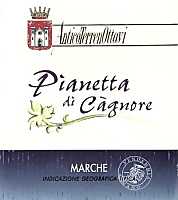
|
|
Pianetta di Cagnore 2003 |
|
| Antico Terreno Ottavi (Marches, Italy) | |
| Grapes: Vernaccia Nera | |
| Price: € 12.76 | Score: |
| This wine shows an intense ruby red color and nuances of ruby red, moderate transparency. The nose reveals intense, clean, pleasing and refined aromas that start with hints of black cherry, black currant and plum followed by aromas of carob, violet, vanilla and black pepper. The mouth has good correspondence to the nose, a slightly tannic attack and however balanced by alcohol, good body, intense flavors. The finish is persistent with flavors of black cherry, black currant and plum. Pianetta di Cagnore ages in barrique for 16-18 months. | |
| Food Match: Broiled meat, Stewed meat with mushrooms, Stuffed pasta | |
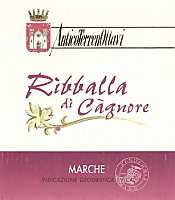
|
|
Ribballa di Cagnore 2003 |
|
| Antico Terreno Ottavi (Marches, Italy) | |
| Grapes: Montepulciano | |
| Price: € 12.76 | Score: |
| The wine shows an intense ruby red color and nuances of ruby red, moderate transparency. The nose denotes intense, clean, pleasing and refined aromas that start with hints of plum jam and black cherry jam followed by aromas of dried violet, vanilla, tobacco, carob and menthol. The mouth has good correspondence to the nose, a tannic attack and however balanced by alcohol, good body, intense flavors. The finish is persistent with flavors of plum jam and black cherry jam. Ribballa di Cagnore ages for 16-18 months in barrique. | |
| Food Match: Roasted meat, Braised and stewed meat, Broiled meat and barbecue | |
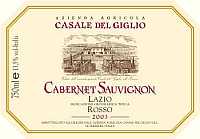
|
|
Cabernet Sauvignon 2003 |
|
| Casale del Giglio (Latium, Italy) | |
| Grapes: Cabernet Sauvignon | |
| Price: € 14.40 | Score: |
| This Cabernet Sauvignon shows an intense ruby red color and nuances of ruby red, little transparency. The nose reveals intense, clean, pleasing, refined and elegant aromas which start with hints of black cherry, plum and black currant followed by aromas of violet, blueberry, vanilla, tobacco, bell pepper, cinnamon and menthol. The mouth has good correspondence to the nose, a tannic attack and however balanced by alcohol, good body, intense flavors. The finish is persistent with flavors of black cherry, plum and black currant. A well made wine. This Cabernet Sauvignon ages for 18-20 months in barrique. | |
| Food Match: Roasted meat, Stewed and braised meat, Hard cheese | |
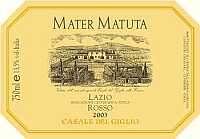
|
|
Mater Matuta 2003 |
|
| Casale del Giglio (Latium, Italy) | |
| Grapes: Syrah (85%), Petit Verdot (15%) | |
| Price: € 24.00 | Score: |
| Mater Matuta shows an intense ruby red color and nuances of ruby red, little transparency. The nose reveals intense, clean, pleasing, refined and elegant aromas which start with hints of black cherry, plum and black currant followed by aromas of vanilla, violet, blueberry, black pepper, chocolate, tobacco, licorice, mace and eucalyptus. The mouth has excellent correspondence to the nose, a tannic attack and however balanced by alcohol, full body, intense flavors, agreeable. The finish is very persistent with long flavors of black cherry, black currant and plum. A well made wine. Mater Matuta ages for 22-24 months in barrique followed by 6-8 months of aging in bottle. | |
| Food Match: Game, Roasted meat, Braised and stewed meat with mushrooms, Hard cheese | |
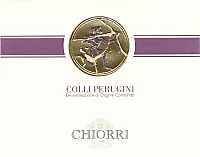
|
|
Colli Perugini Rosso 2003 |
|
| Chiorri (Umbria, Italy) | |
| Grapes: Sangiovese (50%), Merlot (30%), Cabernet Sauvignon (20%) | |
| Price: € 8.00 | Score: |
| The wine shows an intense ruby red color and nuances of ruby red, moderate transparency. The nose denotes intense, clean and pleasing aromas that start with hints of black cherry, plum and raspberry followed by aromas of blackberry, violet and cyclamen. The mouth has good correspondence to the nose, a slightly tannic attack and however balanced by alcohol, good body, intense flavors. The finish is pretty persistent with flavors of plum and black cherry. This Colli Perugini Rosso ages for 10 months in steel tanks followed by 18 months of aging in bottle. | |
| Food Match: Pasta with meat and mushrooms, Broiled meat and barbecue, Sauteed meat | |
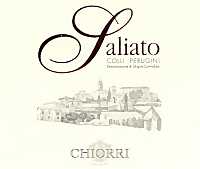
|
|
Colli Perugini Rosso Saliato 2003 |
|
| Chiorri (Umbria, Italy) | |
| Grapes: Sangiovese (50%), Merlot (30%), Cabernet Sauvignon (20%) | |
| Price: € 10.00 | Score: |
| Colli Perugini Rosso Saliato shows a brilliant ruby red color and nuances of garnet red, moderate transparency. The nose denotes intense, clean, pleasing and refined aromas which start with hints of black cherry, blackberry and plum followed by aromas of vanilla, blueberry, tobacco and carob. The mouth has good correspondence to the nose, a tannic attack and however balanced by alcohol, good body, intense flavors. The finish is persistent with flavors of plum and blackberry. This wine ages in barrique followed by 18 months of aging in bottle. | |
| Food Match: Roasted meat, Braised and stewed meat, Hard cheese | |

|
|
Prosecco di Valdobbiadene Vigneti del Fol 2005 |
|
| Bisol (Veneto, Italy) | |
| Grapes: Prosecco | |
| Price: € 18.50 | Score: |
| Prosecco di Valdobbiadene Vigneti del Fol shows a brilliant greenish yellow color and nuances of greenish yellow, very transparent, good effervescence, fine and persistent perlage. The nose denotes intense, clean, pleasing and refined aromas that start with hints of apple, pear and wistaria followed by aromas of acacia, hawthorn, broom, peach and litchi. The mouth has good correspondence to the nose, a crisp and effervescent attack, however balanced by alcohol, intense flavors, agreeable smoothness. The finish is persistent with flavors of pear, apple and litchi. | |
| Food Match: Fish and crustaceans appetizers, Risotto with crustaceans and vegetables | |

|
|
Duca di Dolle |
|
| Bisol (Veneto, Italy) | |
| Grapes: Prosecco | |
| Price: € 30.00 - 375ml | Score: |
| Duca di Dolle shows a brilliant amber yellow color and nuances of amber yellow, transparent. The nose reveals intense, clean, pleasing and refined aromas which start with hints of dried fig, dried apricot and almond followed by aromas of candied fruits, date, acacia honey, quince jam, lavender, vanilla, citrus fruits peel and nail polish. The mouth has good correspondence to the nose, a sweet and round attack, however balanced by alcohol, good body, intense flavors, agreeable. The finish is persistent with flavors of date, dried apricot and candied fruits. Duca di Dolle was bottles in 2006 and it is made by assembling 14 different vintages, from 1991 to 2005. | |
| Food Match: Confectionery, Almond tarts, Hard cheese | |
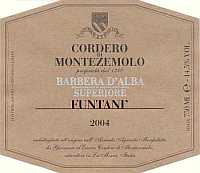
|
|
Barbera d'Alba Superiore Funtanì 2004 |
|
| Cordero di Montezemolo (Piedmont, Italy) | |
| Grapes: Barbera | |
| Price: € 20.00 | Score: |
| The wine shows an intense ruby red color and nuances of ruby red, little transparency. The nose denotes intense, clean, pleasing and refined aromas which start with hints of cherry, violet and plum followed by aromas of blueberry, vanilla, tobacco, pink pepper, licorice, chocolate and menthol. The mouth has good correspondence to the nose, a tannic attack and pleasing crispness, however balanced by alcohol, good body, intense flavors. The finish is persistent with flavors of cherry, plum and blueberry. Barbera d'Alba Superiore Funtanì ages in cask for 15 months followed by at least 6 months of aging in bottle. | |
| Food Match: Roasted meat, Stewed and braised meat with mushrooms | |
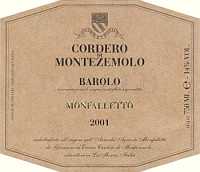
|
|
Barolo Monfalletto 2001 |
|
| Cordero di Montezemolo (Piedmont, Italy) | |
| Grapes: Nebbiolo | |
| Price: € 28.00 | Score: |
| This Barolo shows a brilliant ruby red color and nuances of brick red, moderate transparency. The nose reveals intense, clean, pleasing, refined and elegant aromas that start with hints of cherry, plum and violet followed by aromas of raspberry, strawberry, vanilla, rose, tobacco, cocoa, licorice, cinnamon, leather and menthol. The mouth has good correspondence to the nose, a tannic attack and pleasing crispness, however balanced by alcohol, full body, intense flavors. The finish is persistent with flavors of cherry, plum and raspberry. A well made wine. Barolo Monfalletto ages for 18-22 months in cask. | |
| Food Match: Game, Roasted meat, Stewed and braised meat, Hard cheese | |
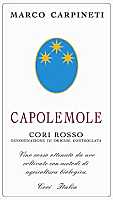
|
|
Cori Rosso Capolemole 2005 |
|
| Marco Carpineti (Latium, Italy) | |
| Grapes: Montepulciano, Nero Buono, Cesanese | |
| Price: € 9.00 | Score: |
| The wine shows an intense ruby red color and nuances of ruby red, little transparency. The nose denotes intense, clean and pleasing aromas which start with hints of black cherry and plum followed by aromas of blueberry, cyclamen, tobacco and vanilla. The mouth has good correspondence to the nose, a slightly tannic attack and however balanced by alcohol, good body, intense flavors. The finish is persistent with flavors of black cherry and plum. This wine ages for 6-8 months in cask. | |
| Food Match: Broiled meat, Stewed meat, Roasted meat | |
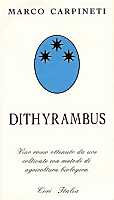
|
|
Dithyrambus 2003 |
|
| Marco Carpineti (Latium, Italy) | |
| Grapes: Montepulciano (60%), Nero Buono (40%) | |
| Price: € 16.00 | Score: |
| The wine shows a deep ruby red color and nuances of garnet red, little transparency. The nose denotes intense, clean, pleasing and refined aromas which start with hints of black cherry, plum and blackberry followed by aromas of violet, vanilla, tobacco, cyclamen, carob, mace and leather. The mouth has good correspondence to the nose, a tannic attack and however balanced by alcohol, full body, intense flavors. The finish is persistent with flavors of black cherry, plum and blackberry. Dithyrambus ages for 24 months in cask. | |
| Food Match: Roasted meat, Braised and stewed meat, Hard cheese | |
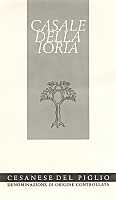
|
|
Cesanese del Piglio 2005 |
|
| Casale della Ioria (Latium, Italy) | |
| Grapes: Cesanese di Affile (55%), Cesanese (45%) | |
| Price: € 6.40 | Score: |
| This wine shows an intense ruby red color and nuances of ruby red, moderate transparency. The nose denotes intense, clean and pleasing aromas which start with hints of cherry, blueberry and plum followed by aromas of raspberry, blackberry and violet. The mouth has good correspondence to the nose, a slightly tannic attack and pleasing crispness, however balanced by alcohol, good body, intense flavors. The finish is persistent with flavors of cherry and raspberry. This wine ages for 4-5 months in cask followed by 6 months of aging in bottle. | |
| Food Match: Sauteed meat, Legumes soups, Stewed meat | |
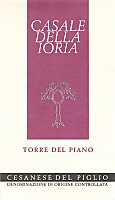
|
|
Cesanese del Piglio Torre del Piano 2004 |
|
| Casale della Ioria (Latium, Italy) | |
| Grapes: Cesanese di Affile | |
| Price: € 10.33 | Score: |
| The wine shows a brilliant ruby red color and nuances of ruby red, moderate transparency. The nose reveals intense, clean, pleasing and refined aromas that start with hints of cherry, raspberry and plum followed by aromas of cyclamen, vanilla, blueberry, pink pepper, menthol, carob and mace. The mouth has good correspondence to the nose, a slightly tannic attack and pleasing crispness, however balanced by alcohol, good body, intense flavors. The finish is persistent with flavors of cherry, raspberry and plum. Cesanese del Piglio Torre del Piano ages for 8 months in cask followed by 6 months of aging in bottle. | |
| Food Match: Sauteed meat with mushrooms, Broiled meat and barbecue, Stewed meat | |
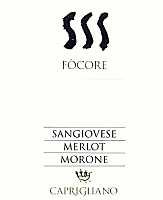
|
|
Focore 2002 |
|
| Caprigliano (Latium, Italy) | |
| Grapes: Sangiovese (50%), Merlot (40%), Morone (10%) | |
| Price: € 5.50 | Score: |
| The wine shows an intense ruby red color and nuances of ruby red, moderate transparency. The nose denotes intense, clean, pleasing and refined aromas which start with hints of black cherry, plum and blueberry followed by aromas of violet, carob, tobacco and vanilla. The mouth has good correspondence to the nose, a slightly tannic attack and pleasing roundness, however balanced by alcohol, good body, intense flavors. The finish is persistent with flavors of black cherry and plum. Focore ages for 6 months in barrique followed by 6 months of aging in bottle. | |
| Food Match: Stewed meat with mushrooms, Stuffed pasta, Roasted meat | |
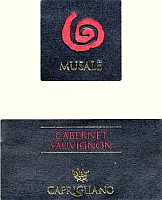
|
|
Musalè 2001 |
|
| Caprigliano (Latium, Italy) | |
| Grapes: Cabernet Sauvignon | |
| Price: € 5.50 | Score: |
| Musalè shows a brilliant ruby red color and nuances of ruby red, moderate transparency. The nose denotes intense, clean, pleasing and refined aromas that start with hints of black cherry, blueberry and black currant followed by aromas of plum, violet, raspberry, vanilla, pink pepper, cyclamen and carob. The mouth has good correspondence to the nose, a tannic attack and however balanced by alcohol, good body, intense flavors. The finish is persistent with flavors of black cherry, black currant and raspberry. Musalè ages for 12 months in steel tanks, 12 months in cask and 6 months in bottle. | |
| Food Match: Roasted meat, Stewed and braised meat, Hard cheese | |
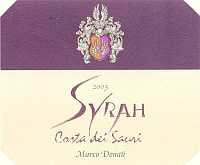
|
|
Syrah Costa dei Sauri 2003 |
|
| Marco Donati (Trentino, Italy) | |
| Grapes: Syrah | |
| Price: € 11.00 | Score: |
| Syrah Costa dei Sauri shows a brilliant ruby red color and nuances of ruby red, moderate transparency. The nose reveals intense, clean, pleasing and refined aromas which start with aromas of black cherry and plum followed by aromas of blueberry, violet, vanilla, tobacco and carob. The mouth has good correspondence to the nose, a slightly tannic attack and pleasing roundness, however balanced by alcohol, good body, intense flavors. The finish is persistent with flavors of black cherry, plum and blueberry. Syrah Costa dei Sauri ages in barrique. | |
| Food Match: Roasted meat, Stewed meat, Broiled meat and barbecue, Cheese | |
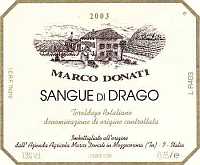
|
|
Teroldego Rotaliano Sangue di Drago 2003 |
|
| Marco Donati (Trentino, Italy) | |
| Grapes: Teroldego | |
| Price: € 20.00 | Score: |
| This wine shows a brilliant ruby red color and nuances of ruby red, moderate transparency. The nose reveals intense, clean, pleasing and refined aromas which start with hints of black cherry, plum and blueberry followed by aromas of raspberry, cyclamen, violet, vanilla, tobacco, carob and mace. The mouth has good correspondence to the nose, a tannic attack and however balanced by alcohol, good body, intense flavors, agreeable. The finish is persistent with flavors of black cherry, blueberry and plum. Teroldego Rotaliano Sangue di Drago ages for 16-18 months in barrique. | |
| Food Match: Roasted meat, Braised and stewed meat with mushrooms, Hard cheese | |
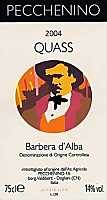
|
|
Barbera d'Alba Quass 2004 |
|
| Pecchenino (Piedmont, Italy) | |
| Grapes: Barbera | |
| Price: € 10.80 | Score: |
| Barbera d'Alba Quass shows a deep ruby red color and nuances of purple red, little transparency. The nose denotes intense, clean, pleasing, refined and elegant aromas which start with hints of cherry, plum and blueberry followed by aromas of raspberry, strawberry, violet, blackberry, cyclamen, cocoa, pink pepper and menthol. The mouth has good correspondence to the nose, a tannic attack and pleasing crispness, however balanced by alcohol, good body, intense flavors. The finish is persistent with flavors of cherry, plum and blueberry. A well made wine. Barbera d'Alba Quass ages for 12 months in cask. | |
| Food Match: Roasted meat, Braised and stewed meat with mushrooms, Hard cheese | |
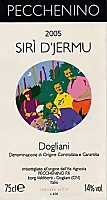
|
|
Dolcetto di Dogliani Siri d'Jermu 2005 |
|
| Pecchenino (Piedmont, Italy) | |
| Grapes: Dolcetto | |
| Price: € 9.60 | Score: |
| This wine shows an intense ruby red color and nuances of purple red, moderate transparency. The nose denotes intense, clean, pleasing, refined and elegant aromas that start with hints of cherry, blueberry and blackberry followed by aromas of raspberry, strawberry, plum, cyclamen, violet, black currant, menthol and peach. The mouth has good correspondence to the nose, a tannic attack and pleasing crispness, however balanced by alcohol, good body, intense flavors. The finish is persistent with flavors of cherry, blueberry and plum. A well made wine. Dolcetto di Dogliani Siri d'Jermu ages for 6 months in steel tanks. | |
| Food Match: Broiled meat and barbecue, Stewed meat | |
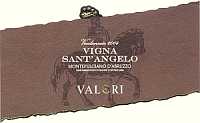
|
|
Montepulciano d'Abruzzo Vigna Sant'Angelo 2003 |
|
| Valori (Abruzzo, Italy) | |
| Grapes: montepulciano | |
| Price: € 25.20 | Score: |
| This Montepulciano d'Abruzzo shows an intense ruby red color and nuances of ruby red, little transparency. The nose reveals intense, clean, pleasing, refined and elegant aromas that start with hints of black cherry, plum and blackberry followed by aromas of blueberry, violet, vanilla, pink pepper, cinnamon, carob, mace and menthol. The mouth has good correspondence to the nose, a tannic attack and however balanced by alcohol, good body, intense flavors, agreeable roundness. The finish is persistent with flavors of black cherry, plum and blackberry. A well made wine. Montepulciano d'Abruzzo Vigna Sant'Angelo ages for 12 months in barrique followed by 12 months of aging in bottle. | |
| Food Match: Broiled meat and barbecue, Roasted meat, Braised and stewed meat | |
MasciarelliIn a little more than twenty years Gianni Masciarelli has been successful in taking the wines of Abruzzo to the top of Italian enology, a worldwide success obtained together with his wife Marina Cvetić |
|
Montepulciano and Trebbiano: two grapes once unknown and not very appreciated, today two protagonists of the Italian enology stardom. The two grapes are in fact the protagonists of the success of Abruzzo's wines, a strong and significative bond, in particular with Montepulciano, the famous red berried grape which in this region reaches the best of its expression. A singular case, if we think Montepulciano was once defined as a “neutral” grape, of course not for its quality, indeed for the disputable use which was done in the production of wines. Distant times - luckily - and today Montepulciano d'Abruzzo is among the most important Italian wines, a success obtained thanks to the tenacity of those producers who believed in the resources and potentials of their region and in the grapes which have always been cultivated in their lands. Most of the time going against the tide, by introducing - in general skepticism - new wine making technologies, new modern techniques which allowed Montepulciano, and of course Trebbiano as well, to reach the highest levels all over the world.
Among the absolute protagonists of this fundamental change there is Gianni Masciarelli, who inherits from his grandfather Giovanni the passion for vineyards and wine. It is right in the old winery of his grandfather Gianni Masciarelli begins to create his wines. In 1978 Gianni Masciarelli produced his first wines, in times when the wine was just a passion, and it will be in 1981 he will completely commit to wine and making of it a real business. The turning point happened after a journey in France and when he came back, Masciarelli decided to start the production of wines and to sell them. In that year he produced about 2000 bottles: 700 of Montepulciano and 1300 of Trebbiano. In the following years Gianni Masciarelli rents some estates and soon after he buys a hectare at San Martino sulla Marrucina - in the province of Chieti - and in 1983 his production reached 9000 bottles. In his land, Gianni Masciarelli applies the viticultural concepts learned in France, criticized by anything and anyone, as the cultivation technique, grafting of vines and production of wine, were in evident contrast with what was suggested by tradition and the wine making concept of those times in Abruzzo and in Italy. Everyone believed that young man - at those time in his twenties - was wasting his time and his money, indeed he was building the foundation of a high quality wine making in his region. In 1987, during a visit in a social winery in Croatia, Gianni Masciarelli meets Marina Cvetić, at those time being a student in food chemistry engineering at the university of Belgrade. From that meeting born a private and professional bond and the two got married in 1989. Dynamic, tenacious and with very clear ideas, Marina Cvetić soon impressed her personality in her husband's winery, therefore creating one of the most representative “brands” of Masciarelli and which is named after her.
Another important moment was 1984, when Gianni Masciarelli created his most prestigious and ambitious wine: Montepulciano d'Abruzzo Villa Gemma. For the occasion he introduced modern wine making techniques and enological practices at those time being not very common in Abruzzo, and allowed his wine to age for a long period in barrique. He chose the grapes of his best vineyard of San Martino sulla Marrucina - which according to Gianni Masciarelli is among the best 50 crus in the world - and the result was a wine which is still today considered among the best of Italy. It was a striking success. Another important moment arrived in 1991, when it was created the first wine named after Gianni Masciarelli's wife: Trebbiano d'Abruzzo Marina Cvetić. Also for the production of this wine have been used modern wine making techniques and he chose to age the wine in barrique: another striking success which still today distinguishes the excellent production of Gianni Masciarelli. Despite Gianni Masciarelli's winery is relatively “young”, in a little more than twenty years it has been capable of reaching the top wine making, not only in Italy, but also all over the world. The winery is located at San Martino sulla Marrucina, in the province of Chieti, at an altitude of 410 meters and at just 20 kilometers from the Adriatic sea and at 20 kilometers from the Maiella mountains. The environmental and climate conditions of San Martino sulla Marrucina are very suited for the production of quality wines, a characteristic which is widely proven by Masciarelli's wines. From the initial 2.5 hectares, the winery today owns about 220 hectares in every province of Abruzzo, of which 194 of them destined to vineyards. The grape which is mainly cultivated in Masciarelli's vineyards is Montepulciano - which represents about 70% of production - as well as Trebbiano d'Abruzzo, about 20%, and 10% of Chardonnay and Cococciola, an autochthonous white berried grape of Abruzzo. The current yearly production of Gianni Masciarelli winery is of more than one million and a half of bottles, commercialized in three ranges: Masciarelli Classico, Villa Gemma and Marina Cvetić. In recent times, Masciarelli winery has released a new wine, produced by the Marina Cvetić winery and belonging to the Masciarelli group. The name of this new wine is Iskra, a Slav terms meaning “sparkle”, available at its release with 2003 vintage. Iskra represents the further witness of Masciarelli's productive philosophy. Just like the other wines, the goal is to vinify 100% Montepulciano while trying to give each of them a proper character, derived by the specific qualities of the territory. In Masciarelli's productive philosophy great importance is given to territory, which determines about 50% of the final result. Also the varieties of grape certainly represent a remarkable importance, however what gives the wine its personality is the result obtained from many factors, such as the intervention of man, the specific qualities of territory, varieties of grapes and, last but not the least, wine culture and tradition of the place.
|
||||||||||||||||||||
|
Score legend Prices are to be considered as indicative. Prices may vary according to the country or the shop where wines are bought |
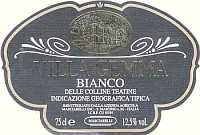
|
|
Villa Gemma Bianco 2006 |
|
| Masciarelli (Abruzzo, Italy) | |
| Grapes: Trebbiano d'Abruzzo (80%), Cococciola (15%), Chardonnay (5%) | |
| Price: € 6.00 | Score: |
| Villa Gemma Bianco shows a pale straw yellow color and nuances of greenish yellow, very transparent. The nose denotes intense, clean, pleasing and refined aromas which start with hints of apple, pear and peach followed by aromas of pineapple, hawthorn and broom. The mouth has good correspondence to the nose, a crisp attack and however balanced by alcohol, good body, intense flavors. The finish is persistent with flavors of pear, peach and pineapple. Villa Gemma Bianco ages for 5 months in steel tanks. | |
| Food Match: Pasta and risotto with fish and crustaceans, Broiled fish, Fried fish | |
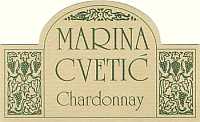
|
|
Chardonnay Marina Cvetić 2004 |
|
| Masciarelli (Abruzzo, Italy) | |
| Grapes: Chardonnay | |
| Price: € 25.20 | Score: |
| This Chardonnay shows a brilliant golden yellow color and nuances of golden yellow, very transparent. The nose denotes intense, clean, pleasing and refined aromas which start with hints of apple, plum and toasted wood followed by aromas of banana, hawthorn, vanilla, pear, hazelnut, grapefruit and nougat. The mouth has good correspondence to the nose, a crisp attack and pleasing roundness, however balanced by alcohol, good body, intense flavors. The finish is persistent with flavors of apple, plum and grapefruit. Chardonnay Marina Cvetić ages for 23 months in barrique. | |
| Food Match: Stuffed pasta, Roasted fish, Mushrooms soups, Roasted white meat | |
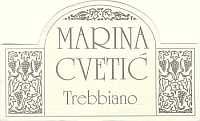
|
|
Trebbiano d'Abruzzo Marina Cvetić 2004 |
|
| Masciarelli (Abruzzo, Italy) | |
| Grapes: Trebbiano d'Abruzzo | |
| Price: € 25.20 | Score: |
| Trebbiano d'Abruzzo Marina Cvetić shows a brilliant golden yellow color and nuances of golden yellow, very transparent. The nose reveals intense, clean, pleasing, refined and elegant aromas which start with hints of apple, plum and hawthorn followed by aromas of toasted wood, broom, pineapple, lavender, honey, hazelnut, ripe peach, pear and vanilla. The mouth has good correspondence to the nose, a crisp attack and pleasing roundness, however balanced by alcohol, good body, intense flavors. The finish is persistent with flavors of apple, plum and pear. Trebbiano d'Abruzzo Marina Cvetić ages for 22 months in barrique. | |
| Food Match: Roasted fish, Roasted white meat, Stuffed pasta, Mushrooms soups | |
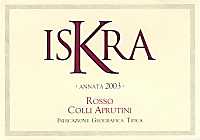
|
|
Iskra 2003 |
|
| Masciarelli (Abruzzo, Italy) | |
| Grapes: Montepulciano | |
| Price: € 28.80 | Score: |
| Iskra shows a deep ruby red color and nuances of ruby red, impenetrable to light. The nose reveals intense, clean, pleasing, refined and elegant aromas which start with hints of black cherry, plum and black currant followed by aromas of violet, vanilla, tobacco, licorice, cinnamon, eucalyptus, cocoa, pink pepper and mace. The mouth has good correspondence to the nose, a tannic attack and however balanced by alcohol, full body, intense flavors, agreeable. The finish is persistent with flavors of black cherry, plum and black currant. A well made wine. Iskra ages for 12 months in barrique followed by 24 months of aging in bottle. | |
| Food Match: Game, Roasted meat, Braised and stewed meat, Hard cheese | |
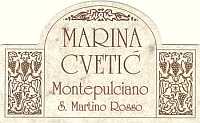
|
|
Montepulciano d'Abruzzo Marina Cvetić 2003 |
|
| Masciarelli (Abruzzo, Italy) | |
| Grapes: Montepulciano | |
| Price: € 16.80 | Score: |
| Montepulciano d'Abruzzo Marina Cvetić shows a deep ruby red color and nuances of ruby red, little transparency. The nose reveals intense, clean, pleasing, refined and elegant aromas which start with hints of black cherry, plum and black berry followed by aromas of blueberry, violet, vanilla, tobacco, pink pepper, licorice, cinnamon, cocoa, mace, leather and menthol. The mouth has excellent correspondence to the nose, a tannic attack and however balanced by alcohol, full body, intense flavors, agreeable roundness. The finish is very persistent with long flavors of black cherry, plum and blackberry. A very well made wine. Montepulciano d'Abruzzo Marina Cvetić ages for 18 months in steel tanks followed by 14 months of aging in barrique. | |
| Food Match: Game, Roasted meat, Braised and stewed meat, Hard cheese | |
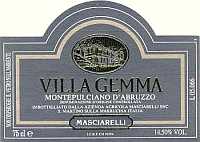
|
|
Montepulciano d'Abruzzo Villa Gemma 2001 |
|
| Masciarelli (Abruzzo, Italy) | |
| Grapes: Montepulciano | |
| Price: € 45.00 | Score: |
| Montepulciano d'Abruzzo Villa Gemma shows a deep ruby red color and nuances of ruby red, little transparency. The nose reveals intense, clean, pleasing, refined and elegant aromas which start with hints of black cherry, plum and blackberry followed by aromas of violet, black currant, blueberry, vanilla, tobacco, licorice, cinnamon, leather, cocoa, pink pepper, mace and menthol. The mouth has an excellent correspondence to the nose, a tannic attack and pleasing roundness, however well balanced by alcohol, full body, intense flavors, very agreeable. The finish is very persistent with long flavors of black cherry, plum and blackberry. A magnificent wine. Montepulciano d'Abruzzo Villa Gemma ages for 36 months, of which 18-24 in barrique. | |
| Food Match: Game, Roasted meat, Braised and stewed meat, Hard cheese | |
| Masciarelli - Via Gamberale, 1 - 66010 San Martino sulla Marrucina, Chieti (italy) - Tel. +39 871 85241 Fax: +39 871 85330 - Winemaker: Romeo Taraborrelli - Established: 1981 - Production: 1.600.000 bottles - E-Mail: info@masciarelli.it - WEB: www.masciarelli.it |
DiWineTaste and Vigne del LazioLast December DiWineTaste and Vigne del Lazio have set an agreement about the review of the wines of its members and the publication in the Guide |
|
In the last years the wine making production of Latium is catching the attention of wine lovers by a new form of promotion, by highlighting - first of all - the aspect of quality. The many wineries of the region are in fact proving the great potentials of Latium in wine making, an effort which is also making use of an important communication campaign in order to give a better visibility to these wines. Last December, in occasion of a meeting in Perugia, Antonello Biancalana - editor of DiWineTaste - and Dr. Antonio Santarelli - president of the Vigne del Lazio association - have set a collaboration agreement about the review of wines produced by their member wineries. The review and the publication in the DiWineTaste's Wine Guide will be protracted for the next issues, by choosing every month a selection of wine of three or four producers. The collaboration will begin with the review of the red wines currently available, to which will be added - as soon as they will be available - the new vintages of white wines. In the course of the following months, DiWineTaste's Wine Guide will get enriched of the wines produced by the member wineries of Vigne del Lazio. The association currently include 29 members wineries and precisely: Cantine Palombo, Caprigliano, Carpineti Marco, Casale del Giglio, Casale della Ioria, Casale Mattia, Castel De Paolis, Cavalieri, Colacicchi, Colle Di Maggio, Colletonno, Conte Zandotti, D'Amico Paolo e Noemia, Falesco, Fontana Candida, Giangirolami Donato, I Pampini, Il Quadrifoglio, L'Olivella, Massimi Berucci, Sergio Mottura, Pietra Pinta, Principe Pallavicini, Proietti, Sant'Andrea, Tenuta Ronci di Nepi, Tenuta Santa Lucia, Tenuta Sant'Isidoro and Vini Giovanni Terenzi. The reviews of the wines produced by the member wineries of Vigne del Lazio will begin from this issue and will be protracted for the following months. The long series of reviews will begin with the wines of Caprigliano, Carpineti Marco, Casale del Giglio and Casale della Ioria wineries. A selection of the reviews Will be published in the “Wines of the Month” column, whereas in the Wine Guide - also available in mobile phones and mobile devices - will be published the evaluations and the reviews of all wines. The association Vigne del Lazio was founded in Rome in 1999 with the goal of spreading the knowledge and the improvement of Latium's quality wine image. The project of the association Vigne del Lazio is supported by the government of Latium region, by ARSIAL (Agenzia Regionale per lo Sviluppo e l'Innovazione dell'Agricoltura del Lazio) and by the Regional Federation of Farmers.
|
||||
News |
|
In this section are published news and information about events concerning the world of wine and food. Whoever is interested in publishing this kind of information can send us a mail to our address.
|
Making Wine: After the FermentationAt the end of alcoholic fermentation, it is now time to do the first racking and to let the wine towards the indispensable journey of aging |
|
Alcoholic fermentation - or primary fermentation - is an essential process allowing the transformation of the must into wine. At the end of the fermentation, despite what it is obtained can already be defined as “wine”, our beverage still needs to undergo other procedures in order to be fully appreciated. At the end of the fermentation is necessary to do some controls on the stability of wine and on the absence of any possible fault, in order to prepare it in the best possible conditions for the next phase: aging. In the production of wine, every operation plays a fundamental and important role, and most of faults which can be found in wines widely depend on the phases following alcoholic fermentation, in particular in home wine making. Alterations and faults which can develop during the aging of wine are in fact many, it will be therefore needed to adopt specific preventions in order not to damage the job done do far.
|
The fermentation of red wines requires a higher care than white wines. Skins are allowed to macerate with the wine and, because of the effects of the carbon dioxide developing during the fermentation, they will tend to move upwards by literally floating on the surface. As they get to the surface - therefore in contact with the air - skins represent a serious risk factor for the stability of wine and for fermentation. When in contact with the air the skins tend to dry and, even worse, it can also develop vinegar and negative effects, such as mold, therefore damaging the wine. For this reason it is of fundamental importance the skins are always and completely plunged in the wine, by constantly keeping them wet and avoiding the contact with air. In order to avoid this inconvenience, it will be necessary to periodically “punching-down” the skins - two or three times a day, at regular intervals and for all the period of fermentation - consisting in plunging the skins by means of a stick or a similar tool. This operation ensures a better extraction of coloring substances and polyphenols from the skins, as well as favoring the oxygenation of yeast, therefore making it more active. The substances extracted during the maceration of the skins in the must, are essential for the color of wine and, in particular, the extraction of polyphenolic substances - tannins - give the wine a proper structure. The quantity of substances extracted from the skin depends on the type of grape, temperature and maceration time, therefore it will be paid proper attention, during the fermentation, to check the quantity of color and polyphenols, in order to remove skins at the proper time. When the desired quantity of color and polyphenols will be extracted - also before the end of alcoholic fermentation - we will proceed to the separation of the skins from the wine. Skins will be then pressed and the wine obtained from this operation will be added to the fermenting mass. It should be remembered this operation is done when the wine gets the desired quantity of color and polyphenolic substances, a condition which can also happen at the end of alcoholic fermentation as well as during this process.
|
||||||||
|
Alcoholic fermentation is over and the tumultuous bubbling of the wine has now reached its quiet, just like the sea after the storm. Despite the appearance would suggest the fermentation process is over, indeed the tumult is now replaced by other fermentative activities, equally important, just like the primary fermentation. Wine is an “alive” beverage, therefore in continuous evolution and in continuous change. Before tasting the result of our job, it will be necessary to do some and indispensable operations, of which the first one is the so called “first racking”, that is the separation of the wine from the solid parts which have sedimented during the fermentation. These solid parts, made of yeast residuals and solid substances found in the must, will be separated after the alcoholic fermentation in order to avoid their degradation with the risk of damaging the stability of our wine. When the alcoholic fermentation visibly diminishes its tumultuous activity, solid parts begins to sediment on the bottom and therefore it is now the moment to do the first racking. In general terms, the first racking is done when in the wine there are about 1-2% of residual sugar left - which will be subsequently fermented during the so called “slow fermentation” - however the time of the first racking is determined according to the type of wine to be made. Young wines, destined to an immediate consumption and allowed to macerate with the skins for four or five days, are racked at the end of fermentation, when in the wine are still found 3-5% of non fermented sugar. For quality red wines - however destined to an immediate consumption - and wines produced with overripe grapes, it is preferred to do the first racking at the end of the alcoholic fermentation, that is when there are no residual sugar left. Wines destined to long aging or however full bodied and structured wines, are usually racked after some days from the end of fermentation, therefore allowing the wine to further macerate with the skins - such as in case of red wines - and with lees, therefore giving a higher structure. During fermentation, it may probably happen the development of some negative smells - such as the one of sulphurated hydrogen, typically associated to the smell of “rotten eggs” - therefore it is always suggested to do the first racking “in contact with the air”, by favoring a strong oxygenation. The oxygenation of wine done during the first racking will also be useful to the “reactivation” of yeast, therefore favoring the so called “slow fermentation”, that is the fermentation of residual sugar and which is done in the days following the first racking. For the first racking we will need a flexible rubber pipe, which will be used to transfer the wine from the fermentation container to the one used for the keeping and aging, while avoiding to transfer solid parts and lees. During the first racking, because of the contact with the air, part of volatile sulfur dioxide will be lost and - despite it is replaced by combined sulfur dioxide - the total quantity of SO2 contained in the wine will diminish, therefore increasing the risks of degradation and oxidation. For this reason, at the end of the first racking it is always recommended to add a small quantity of sulfur dioxide - from 4 of 6 grams of potassium metabisulfite for every 100 liters of wine - in order to reintegrate the lost quantity. In case bad smells are still present after the first racking, it is suggested to proceed with another racking - still in contact with the air - in order to favor the dispersion of bad smells. Before proceeding with the first racking - and however before doing any racking - it is always suggested to check the stability and resistance of the wine, in order to adopt proper preventions. The easiest method which can also be used in home wine making is the so called “test of the air”, consisting in leaving a small sample of wine exposed to the air, that is by allowing it to be exposed to the effects of a critical condition. It will be enough to pour the wine to be tested in a glass - half a glass is enough - and to left it for one or two days to the air at room temperature. After one or two days, the wine is observed and checked: in case the color is not changed, there is no haziness and the taste did not become weak, then the wine has good qualities of stability and it is resistant, therefore we can proceed with the first racking - or with the racking - with no particular risks. In case the color of the wine has changed or it is observed some haziness, reduced limpidity, then the wine is affected by “oxydasic casse”. In this case it is necessary to postpone the racking and to add to the wine 10-20 grams of potassium metabisulfite for every 100 liters, according to the intensity of faults, and to repeat the air test after two or three days. In case in the wine are still noticed faults, it will be necessary to repeat the treatment with a half quantity and to repeat the air test until the wine has not become stable. In this case it is suggested to do the first racking with the least possible contact with the air - saved the case the wine has bad smells - as an excessive contact with the air can develop pretty serious faults.
|
||||
|
The type of container used for fermentation, keeping and aging of wine, plays a fundamental role. According to the type of wine to be made, in the many phases of vinification will in fact be used different type of containers, where the volume and the material used for the construction will play a fundamental role. Another essential role in containers used for the vinification is played by hygiene. It is of fundamental importance all the containers, before being used, offer hygienic conditions such not to negatively affect the organoleptic qualities of wine as well as its stability and health. Containers used in wine making are classified in two categories: inert containers and porous containers, made of wood. Inert containers - such as steel or cement vats and glass containers - do not alter the organoleptic qualities of the wine as they do not allow the exchange of the air with the outside, a characteristic which is typical in porous containers, such as casks, barriques and wood vats. All the type of containers can be used for the fermentation of wine, whereas only some of them can be used for the keeping and aging of wine. For the alcoholic fermentation of white wine are generally preferred inert containers, whereas for red wines can be used both inert containers as well as casks or wood vats. The fermentation in cask or in wood vat - which can also be used for white wines - because of the heat and the fermentative activity, favor the extraction of tannins and aromatic components from wood, which will be then passed to the wine. The quantity of components extracted from wood also depends on the age of the cask and on the number of times it has been used: the newer the cask the higher the quantity of components extracted. With time and with use, casks, barriques and wood vats will influence less and less the organoleptic qualities of the wine. For this reason in the commercial production of wine it is common the completely replace - or to use them for other purposes - casks and wood containers every two-four years. Every type of container offers both advantages and disadvantages which will be considered at the moment of the choice in according to the type of wine to be made. Wood containers - casks, barriques and wood vats - besides ensuring the essential exchange of air with the outside, indispensable factor for the aging of wine, will also give the wine their organoleptic qualities as well as ensuring a better isolation from temperature changes. A good isolation from temperature changes is also offered by cement tanks, which also have the advantage of being cheap and to be built according to the room needs of the cellar, however they do not allow the exchange of the air with the outside and they are therefore suggested for young wines or however for wines to be consumed within two or three years from production. Steel tanks are more expensive, offer very good hygienic conditions, however they are more sensitive to temperature changes and for this reason they need proper systems of thermoregulation. Fiberglass containers, very common in home wine making, offer the advantage of being cheap, however they are pretty sensitive to temperature changes. For small quantities can also be used glass demijohns, both for the fermentation and for the keeping. Before being used, containers must be scrupulously washed in order to ensure a good hygienic condition. Cement tanks, which must be covered inside with inert materials, are washed with a solution of hot water and 2% of soda. Fiberglass containers and steel tanks are washed with hot water. In all the cases the deposits or tartrates will be scrupulously removed. Brand new casks, never used or with repaired staves, are washed with a solution of hot water and 51% of soda, then must be scrupulously rinsed, allowed to dry and then will be burned one or two sulfur discs inside of it, according to the volume. Used casks, are cleaned with a brush in order to remove any deposit of tartrates, then washed with a solution of water and 10% of potassium metabisulfite. They are then scrupulously rinsed and some discs of sulfur will be burned inside, as mentioned above. In case the casks have stayed empty for a long time, before using them, it is better to make sure about their perfect tightness. In this case the casks are completely filled with a solution of water and 10% of potassium metabisulfite: in this way the staves are allowed to swell and to tighten any possible loss. After some days, the casks are then emptied and are therefore used the same treatment described for used casks.
|
PomegranateFruit of very ancient origins, pomegranate is used in cooking as well as a remedy in folk medicine, with its small and colored grains, it is also a tasty fruit |
|
“The tree to which you used to stretch your tiny hand, the green pomegranate tree with lovely scarlet flowers…” wrote Giosuè Carducci in his poem “Ancient Lament”. Pomegranate is a plant of very ancient origins, symbol of fertility since thousands years. No other tree has inspired artists, myths and legend like pomegranate, considered as a tree associated to the symbology of religions, it has also been capable of helping man with its pharmacological properties.
|
Pomegranate, better identified with the term Punica Granatum L., belongs to the family of Punica, it is a tree with twisted branches, thorny and abundant, with a red gray colored bark. It is a plant with a slow growth factor, it rarely grows over than 5 meters in height (about 16 feet), with small and stretch shaped leaves. During the period of blossoming, in branches can be seen splendid red flowers. The fruit is a pulpy berry, with a thick yellow colored skin, with nuances from red to orange. At the inside of the fruit are found many seeds covered by a very juicy red pulp, grouped in hollow parts and covered by a thin membrane. The origin of pomegranate seems to be Western Asia, it in fact grows spontaneously in the regions south from the Caucasus, in the northern part of India, in the Punjab region, from Persia to Afghanistan. It is frequently mentioned in the Bible as one of the fruits of the promised land: this would prove Jews knew it and consumed its fruits, also in the form of juice, since very ancient times. In the ancient Egypt it was known and considered to be a medicinal plant because of its therapeutic and vermifuge properties, and it was also used in funerary ceremonies. Pomegranates were also depicted in Egyptian tombs in 2500 BC, they were mentioned in the inscriptions of Tutmosi I (1547 BC), symbols of the pomegranate fruits were also found in the tomb of Ramses IV (1145 BC). In ancient Greece, pomegranate was considered a sacred plant to Venus and Juno. Persephone was condemned to the underworld because she ate seven pomegranate grains. At the times of ancient Romans, brides used to adorn their hair with small branches of pomegranate, as a symbol of richness and fertility. During Christian times it became the allegory of the Church which gathered its believers. Painters of the renaissance put a pomegranate in the hand of the baby Christ as a symbol of the new life offered to humanity. Pliny the Elder called it Malum Punicum: a clear allusion to its probable Phoenician origin. In the course of the 1400s pomegranate is represented in many artworks, in painting, sculpture and decorative arts. As for painting: “Madonna of the Pomegranate” by Botticelli and kept at the Galleria degli Uffizi in Florence; “Madonna of the Pomegranate” or “Madonna Dreyfus” by Leonardo da Vinci, kept at the National Gallery of Art in Washington; “Madonna of the Pomegranate” by Raffaello Sanzio kept at the Albertina Museum in Vienna. As for sculpture: “Madonna of the Pomegranate” by Jacopo della Quercia, white marble sculpture kept in the museum of the cathedral of Ferrara. In decorative arts the symbol of pomegranate is very frequent, such as in case of the art of fabrics and in the art of pottery. Frequently used as a symbol of brotherhood and union, from the East to the West, pomegranate is the symbol of fertility and posterity, symbols which are well represented by the image and structure of pomegranate. In the course of centuries, this particular fruit inspired many legends in many cultures and traditions. In India it is said the fruit of pomegranate is useful as a remedy for sterility, whereas in Turkey brides are used to throw a fruit of pomegranate on the ground and believe they will bear as many children as the grains coming out from the broken fruit. In Dalmatia a legend suggest to the bridegroom to move a plant of pomegranate from the garden of his father-in-law to his own. Native Americans used the juice of pomegranate as a remedy for sterility. Still today in Africa the skin of the fruit is used to tan leather, whereas from the dried skin is being extracted a yellow colorant, also found in some Egyptian tombs.
|
||||||||||||
|
Pomegranate is now common in most of the earth and it is cultivated in the regions where there is a suitable climate. Not all the varieties of pomegranate are edible, therefore are being cultivated the varieties with soft and juice seeds only. When purchasing a pomegranate, it must be paid attention on the skin, it must not have stains or breaks, which could favor the contamination of mold and bacteria. The color of the skin must be red with yellow nuances. It is always suggested to avoid the purchase of unripe fruits, as the pomegranate is a fruit which ripens in the tree only. After purchase, pomegranate can be kept in a cool and dry place for 7-10 days. Medieval cooking made abundant use of pomegranate grains, whereas in modern cooking grains are frequently used for decorative purposes only. The juice is used for the preparation of jellies, beverages and syrups. The slow disappearing from cooking is probably because of the difficulties in cleaning the fruit and because of the many seeds which could be annoying during its consumption. Pomegranate juice can be easily found in stores and in some countries it is a very common beverage. Eastern cooking - such as Persian and Lebanese - make wide use of pomegranate in their dishes. With pomegranate juice can be prepared a thirst quencher beverage called “grenadine”. Pomegranate fruits are rich in vitamins A and B, as well as rich in tannins with astringent properties. Pomegranate juice is a natural refreshing tonic with beneficial effects for the cardiovascular system. Flowers are used for preparing an infusion useful against dysentery. The infusion of ground pomegranate grains is a purifying for the bowl. It is believed 50ml of juice a day can help to keep the cholesterol low and may prevent arteriosclerosis. According to a study done in the American University of Wisconsin, they discovered some elements found in pomegranate juice can contrast the development of prostate cancer or prevent its development. Pomegranate has antioxidant properties, that is contains substances which can protect our cells against free radicals, preventing or contrasting the formation of cellular alterations, therefore preventing the development of cancer. Another university study done in Israel recognizes pomegranate properties which can be useful against cardiovascular diseases, by keeping under control the level of cholesterol. One hundred grams of pomegranate provides 63 kcal and contain: 59% of edible part; 80.5g of water; 2.20g of fibers; 0.5g of proteins; 0.2g of fats; 15.9g of carbohydrates; 15.9g of soluble sugar; 0.03g of unsaturated fats; 0.04g of monounsaturated fats; 0.06g of polyunsaturated fats; 7mg of sodium; 290mg of potassium; 0.3mg of iron; 0.4mg of zinc; 10mg of phosphor; 0.09mg of thiamine (vitamin B1); 0.09mg of riboflavin (vitamin B2); 0.2mg of niacin (vitamin B3); 15mcg of vitamin A; 5mg of vitamin C.
|
AquavitaeReview of Grappa, Distillates and Brandy |
|
|
| Distillates are rated according to DiWineTaste's evaluation method. Please see score legend in the "Wines of the Month" section. |
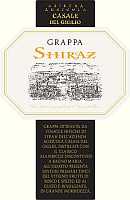
|
|
Grappa Shiraz |
|
| Casale del Giglio (Latium, Italy) | |
| (Distiller: Distilleria Pilzer) | |
| Raw matter: Pomace of Syrah | |
| Price: € 15.20 - 50cl | Score: |
| This grappa is colorless, limpid and crystalline. The nose reveals intense, clean ad pleasing aromas of blackberry, plum, black cherry, licorice and hazelnut with almost imperceptible pungency. In the mouth has intense flavors with perceptible alcohol pungency which tends to dissolve rapidly, dry. The finish is persistent with flavors of blackberry, plum and licorice. This grappa is distilled with a bainmarie discontinuous alembic still. Alcohol 44%. | |
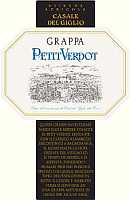
|
|
Grappa Petit Verdot |
|
| Casale del Giglio (Latium, Italy) | |
| (Distiller: Distilleria Pilzer) | |
| Raw matter: Pomace of Petit Verdot | |
| Price: € 18.00 - 50cl | Score: |
| This grappa shows an amber yellow color, limpid and crystalline. The nose reveals intense, clean, pleasing and refined aromas of prune, vanilla, licorice, hazelnut, honey, dried fig, tobacco, walnut and honey, with almost imperceptible alcohol pungency. In the mouth has intense flavors, with perceptible alcohol pungency which tends to dissolve rapidly, good correspondence to the nose, pleasing roundness, balanced sweetness. The finish is persistent with flavors of honey, licorice, dried fig and prune. This grappa is distilled with bainmarie discontinuous alembic still and ages in cask for some years. Alcohol 44%. | |
|
|
|
Grappa di Buttafuoco Oltrepo Pavese |
|
| Il Montù (Lombardy, Italy) | |
| Raw matter: Pomace of Barbera, Croatina, Uva Rara | |
| Price: € 22.28 - 70cl | Score: |
| This grappa is colorless, limpid and crystalline. The nose denotes intense, clean, pleasing and refined aromas of hazelnut, cherry, plum, raspberry, strawberry and licorice with almost imperceptible alcohol pungency. In the mouth has intense flavors with perceptible alcohol pungency which tends to dissolve rapidly, good correspondence to the nose, balanced sweetness, agreeable. The finish is persistent with flavors of cherry, raspberry and hazelnut. This grappa is distilled with a discontinuous bainmarie alembic still. Alcohol 45%. | |

|
|
Grappa di Cabernet |
|
| Distilleria Zanin (Veneto, Italy) | |
| Raw matter: Pomace of Cabernet | |
| Price: € 10.00 - 70cl | Score: |
| This grappa is colorless, limpid and crystalline. The nose denotes intense, clean, pleasing and refined aromas of black cherry, blueberry, plum, black currant, licorice and violet with almost imperceptible alcohol pungency. In the mouth has intense flavors with pretty perceptible alcohol pungency which tends to dissolve rapidly, good correspondence to the nose, balanced sweetness, agreeable. The finish is persistent with flavors of plum, black cherry and black currant.This grappa is distilled with a discontinuous alembic still. Alcohol 40%. | |

|
|
Grappa di Prosecco Barricata |
|
| Distilleria Zanin (Veneto, Italy) | |
| Raw matter: Pomace of Prosecco | |
| Price: € 10.00 - 70cl | Score: |
| This grappa shows a pale straw yellow color, limpid and crystalline. The nose reveals intense, clean, pleasing and refined aromas of dried fig, juniper, licorice, pear, apple, broom and honey with almost imperceptible alcohol pungency. In the mouth has intense flavors with pretty perceptible alcohol pungency which tends to dissolve rapidly, good correspondence to the nose, balanced sweetness, agreeable. The finish is persistent with flavors of dried fig, honey, licorice and pear.This grappa is distilled with a discontinuous alembic still and ages in barrique. Alcohol 40%. | |
Wine Parade |
|
|
| The best 15 wines according to DiWineTaste's readers. To express your best three wines send us an E-mail or fill in the form available at our WEB site. |
| Rank | Wine, Producer | |
|---|---|---|
| 1 |
| Nero al Tondo 2001, Ruffino (Italy) |
| 2 |
| Chianti Classico Riserva Novecento 2000, Dievole (Italy) |
| 3 |
| Don Antonio 2003, Morgante (Italy) |
| 4 |
| Sagrantino di Montefalco Collepiano 2003, Arnaldo Caprai (Italy) |
| 5 |
| Wine Obsession 2001, Vignamaggio (Italy) |
| 6 |
| Amarone della Valpolicella Classico Costasera 2001, Masi (Italy) |
| 7 |
| Amarone della Valpolicella Classico 2000, Zenato (Italy) |
| 8 |
| Soave Classico Monte Alto 2004, Ca' Rugate (Italy) |
| 9 |
| Brunello di Montalcino 1999, Castello Banfi (Italy) |
| 10 |
| Sforzato di Valtellina Canua 2001, Conti Sertoli Salis (Italy) |
| 11 |
| Barolo Cannubi Boschis 2001, Sandrone (Italy) |
| 12 |
| Sagrantino di Montefalco 2003, Antonelli (Italy) |
| 13 |
| Notarpanaro 1999, Taurino (Italy) |
| 14 |
| Barolo Bussia 2001, Prunotto (Italy) |
| 15 |
| Colli Orientali del Friuli Rosazzo Bianco Terre Alte 2002, Livio Felluga (Italy) |
| |||||||
Privacy Policy | |||||||


| Copyright © 2002-2024 Antonello Biancalana, DiWineTaste - All rights reserved |
| All rights reserved under international copyright conventions. No part of this publication and of this WEB site may be
reproduced or utilized in any form or by any means, electronic or mechanical, without permission in writing from DiWineTaste. |